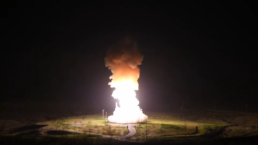The proposal to cleanse Gaza of Palestinians tapped into a deep undercurrent in Israeli society — endangering any chance for a peaceful future in the region.
By Meron Rapoport, +972 Magazine
In September 2020, toward the end of his first term as president, Donald Trump oversaw the signing of the Abraham Accords between Israel, the UAE, and Bahrain on the White House lawn. The deals, to which Sudan and Morocco would also become parties in the months to follow, were proclaimed as “peace agreements,” but it would have been more accurate to label them “agreements to sideline the Palestinian people.” Their goal was not to create peace — there was no war between these states in the first place — but rather to establish a new regional reality in which the Palestinian liberation struggle would be marginalized and ultimately forgotten.
The four and a half years that followed have been the bloodiest in the history of the Israeli-Palestinian conflict. Half a year after the agreements were signed, Israeli forces attacked Ramadan worshippers at Al-Aqsa Mosque and moved to evict Palestinian families from the Sheikh Jarrah neighborhood of Jerusalem, triggering a barrage of Hamas rockets from Gaza and an eruption of intercommunal violence between Jews (backed by Israeli soldiers and police) and Palestinians that engulfed the entire land between the Mediterranean Sea and the Jordan River for the first time since 1948. 2022 and 2023 saw record numbers of Palestinians killed by Israeli soldiers and settlers, as well as a spike in attacks on Israelis. Then came October 7, the ultimate proof that trying to sideline the Palestinian struggle is like ignoring a highway divider: it ends in a fatal collision.

Whether or not Trump understands this, his new approach essentially says: if we can’t bypass the Palestinians, let’s expel them. “I heard that Gaza has been very unlucky for them,” he said in a joint press conference with Israeli Prime Minister Benjamin Netanyahu earlier this week, adding that it would therefore be best if the entire population of the Strip moved to a “good, fresh, beautiful piece of land.”
One of the first criteria by which the idea has been examined is its feasibility. By this measure, it obviously fails. The chances that more than 2 million Palestinians — most of them refugees or descendants of refugees from the Nakba of 1948, who for 75 years have remained in refugee camps in Gaza rather than leave their homeland — would now agree to leave it are close to zero.
The likelihood that countries like Jordan or Egypt would accept even a fraction of that population is equally slim, as such a move could destabilize their regimes. And the idea that the United States, after putting an end to long, expensive, and deadly occupations in Iraq and Afghanistan, would now be willing to “own” Gaza, govern it, and develop it seems just as far-fetched.
Recent Posts
The Perilous Norm of Weapons Testing
November 10, 2025
Take Action Now It’s easy to dismiss a “test” as something less than the full terrifying reality of nuclear weapons use.By Emma Claire Foley On…
The Old Road Is Rapidly Aging
November 10, 2025
Take Action Now The Democratic Establishment Mistook Longevity for LeadershipBy Jackson Rubin, The Working Model If the Mamdani victory on Tuesday…
‘Absolutely Pathetic’: Senate Democrats Denounced For Caving To GOP In Shutdown Fight
November 10, 2025
Take Action Now “Let’s be clear — this proposal isn’t a compromise, it’s a capitulation,” said one progressive lawmaker in the US House.By Jon…
Layoffs in 2025 Second-Highest Since 2009 in Potential Sign of Looming Recession
November 9, 2025
Take Action Now “Those laid off now are finding it harder to quickly secure new roles,” one of the report’s authors said.By Chris Walker,…




